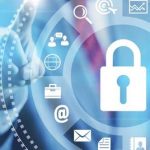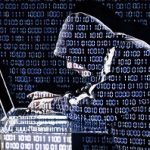 The vast majority of homes in the U.S. have at least one wi-fi network. Thankfully, setting up these in-home networks can be a fairly easy task. However, keeping them safe requires cybersecurity awareness and vigilance. Living in an interconnected world has made it easy for people to go about their day-to-day tasks. Sadly, the average internet user can be a target of identity thieves and hackers online. The good news is, you don’t need to be a Cybersecurity expert to keep your home wireless network safe. Here are some ways to detect if a home network has been hacked:
The vast majority of homes in the U.S. have at least one wi-fi network. Thankfully, setting up these in-home networks can be a fairly easy task. However, keeping them safe requires cybersecurity awareness and vigilance. Living in an interconnected world has made it easy for people to go about their day-to-day tasks. Sadly, the average internet user can be a target of identity thieves and hackers online. The good news is, you don’t need to be a Cybersecurity expert to keep your home wireless network safe. Here are some ways to detect if a home network has been hacked:
Computers in the network receive the same virus and anti-virus notifications.
Home network security breaches can easily begin with one infected desktop computer, laptop or tablet. A cyber hacking attack typically starts with one computer. When one of the devices, typically PCs, have a virus, it can spread easily to the other devices connected to the network. Using infected USBs and hard drives can also contribute to the damage. Make sure to protect all of your devices with the latest anti-virus software, and be sure to install updates on a regular basis. Better yet, set the software to automatically update in order to ensure the best protection. You can download free anti-virus programs like Avast that will provide excellent protection for your computers.
Computers automatically download unwanted programs and browsers.
 Be careful when clicking links in web pages and emails. Avoid clicking promotions for apps before clicking on them to download. Unfortunately, some of the so-called antivirus programs do more harm than good by automatically downloading unwanted browsers and dialog boxes that can lead to stolen information. Rather thank clicking through every box when installing programs or applications on your devices, take a close look at what you’re actually downloading to be sure there are no unwanted applications or programs being installed.
Be careful when clicking links in web pages and emails. Avoid clicking promotions for apps before clicking on them to download. Unfortunately, some of the so-called antivirus programs do more harm than good by automatically downloading unwanted browsers and dialog boxes that can lead to stolen information. Rather thank clicking through every box when installing programs or applications on your devices, take a close look at what you’re actually downloading to be sure there are no unwanted applications or programs being installed.
Users receive suspicious e-mails.
When a home network has been hacked, important information such as e-mail addresses can be used to steal further from a user. Emails from a friend’s unused address or from seemingly legit organizations can be a phishing scam. When people from one network get the same kind of e-mails, their security might have been compromised.
The wi-fi connection is unusually slow and there are suddenly unknown computers connected to the network.
 It’s easy to leech off a neighbor’s wi-fi connection especially if is not properly secured. One of the tell-tale signs of a home network breach is if there are suddenly more computers connected to the network. For some, the hacking goes as far as controlling mouse clicks and movements and copying files from the users’ computers.
It’s easy to leech off a neighbor’s wi-fi connection especially if is not properly secured. One of the tell-tale signs of a home network breach is if there are suddenly more computers connected to the network. For some, the hacking goes as far as controlling mouse clicks and movements and copying files from the users’ computers.
To prevent hacking attacks, it’s important to regularly check network your security. Passwords must be regularly changed and important information should always be backed up in the cloud or in another hard drive. Also, users should only download files and programs from legit sources to prevent falling prey to phishing scams.
One of the most common precautions but usually overlooked step when it comes to home network security is to set up a firewall and encrypt the connection. Others just set up their home Wi-Fi without even putting a password on their connection, making them an easy target. Aside from these steps, filtering MAC addresses will also help in preventing unknown computers join the network.